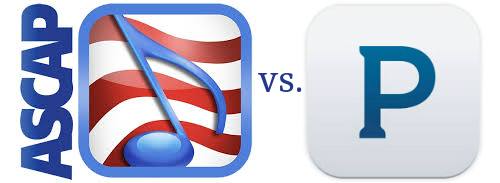“ASCAP has not carried its burden of showing that its proposed rates … are reasonable.” –Federal judge Denis Cote
 The court decision in the ASCAP vs. Pandora royalty-rate trial was released this morning. (The verdict has been known for two days, because ASCAP publicized the result from its private reception of court documents.) In the lengthy court document, presiding federal judge Denise Cote explains how ASCAP failed to achieve the escalated royalty rates it sought on behalf of its client publishers and composers.
The court decision in the ASCAP vs. Pandora royalty-rate trial was released this morning. (The verdict has been known for two days, because ASCAP publicized the result from its private reception of court documents.) In the lengthy court document, presiding federal judge Denise Cote explains how ASCAP failed to achieve the escalated royalty rates it sought on behalf of its client publishers and composers.
To summarize the trial: ASCAP sued Pandora for higher royalty rates owed to composers, songwriters, and publishers, over a five-year period (2011-2014). ASCAP sought an escalating rate, going from 1.85% of Pandora revenue to 3%. Pandora sought a lower rate, from the existing 1.85% of revenue to 1.7%, for the entire five-year period.
The decision: Pandora’s existing 1.85% royalty rate to ASCAP was preserved and extended throughout the five-year period. ASCAP lost a lot more of what it asked for than Pandora did.
In the official court decision published today, federal judge Denise Cote spells out how ASCAP’s arguments failed, and there is a strong focus on establishing a single rate for the whole period, as opposed to ASCAP’s request for an annually adjusted rate. Excerpts:
“ASCAP has not carried its burden of showing that its proposed rates for 2013, 2014, and 2015 are reasonable. To begin with, rate court precedent and ASCAP’s own licensing history establish a presumption that a five-year license should have a single rate. ASCAP has not rebutted that presumption … Having accepted ASCAP’s proposal of a rate of 1.85% as a reasonable rate for the first two years of the Pandora license (2011 and 2012), there is a strong basis to recognize a presumption that the rate of 1.85% would also be a reasonable rate for the last three years of the Pandora license (2013 through 2015) … adoption of an escalating rate over the term of a five year license would be out of step with historical practice. ASCAP has never negotiated nor issued a five-year license with an escalating rate, and rate court jurisprudence is devoid of any example of an escalating ASCAP rate for a single license term.”
The court decision also cites philosophical arguments for a single, unvarying rate over five years:
“There appear to be good reasons why ASCAP and the industry generally adopt a single rate for the term of a license. Absent some unusual circumstances, the value of music to a user is assumed to remain constant through the term of a license. And an escalating rate is not necessary for the licensor to share in the success of the licensee: with a single rate as a percentage of revenue a joint interest is created between the parties in the growth of the licensee’s business. Adoption of a single rate facilitates business planning, encourages reliance on historical data, and discourages resort to contested projections. Likely for these reasons, and others, there is a well developed practice that supports the adoption here of a headline rate of 1.85% for not just the first two years, but also for the last three years of the license.”
Judge Denise Cote was unconvinced by ASCAP’s other arguments, too:
“ASCAP has failed to overcome any presumption that exists in favor of a unitary rate. But, even without such a presumption it has not carried its burden to establish that the rates of2.50% and 3.00% are reasonable.”
